
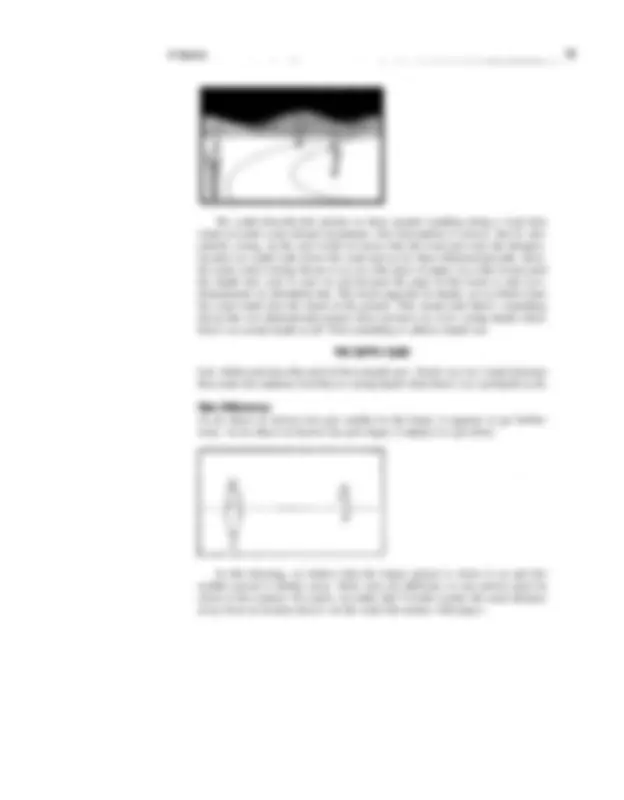
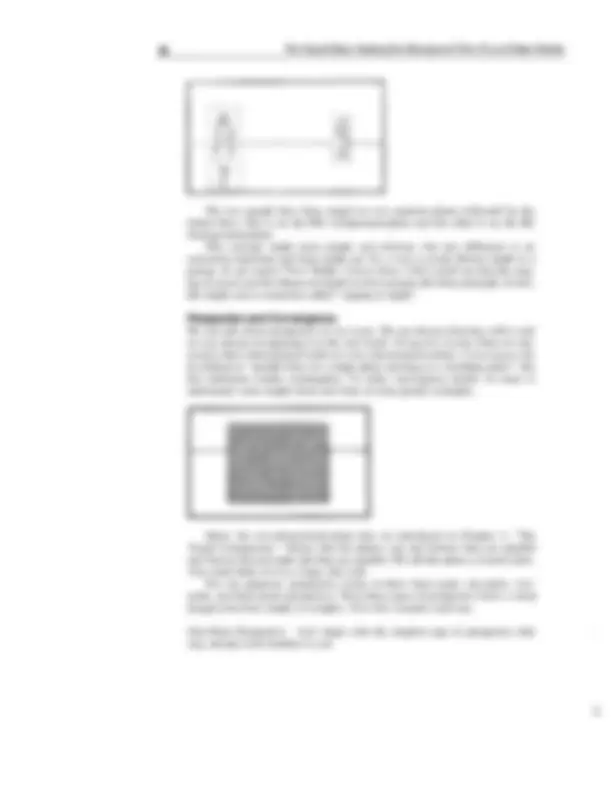
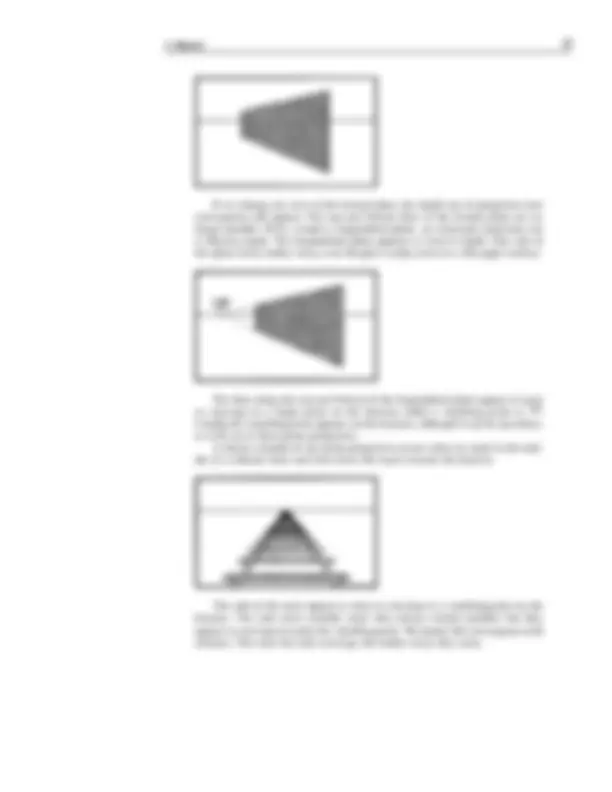
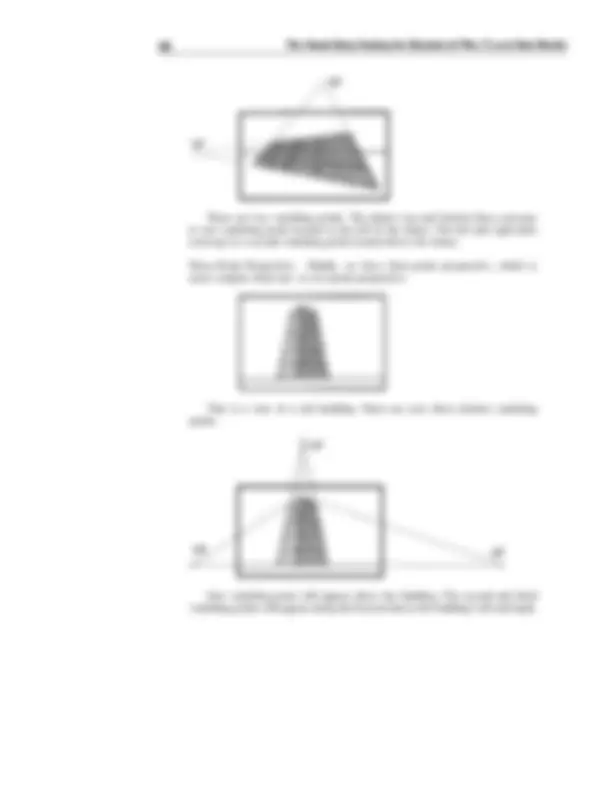
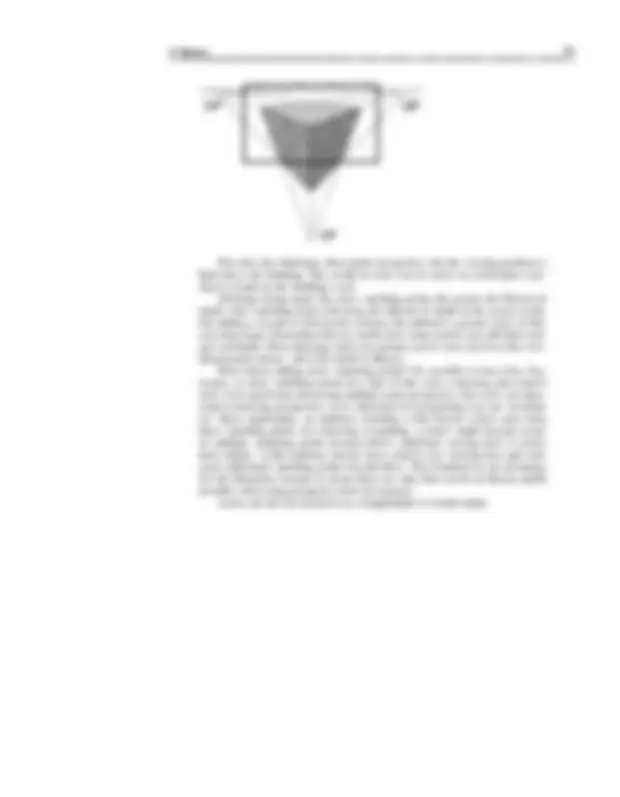
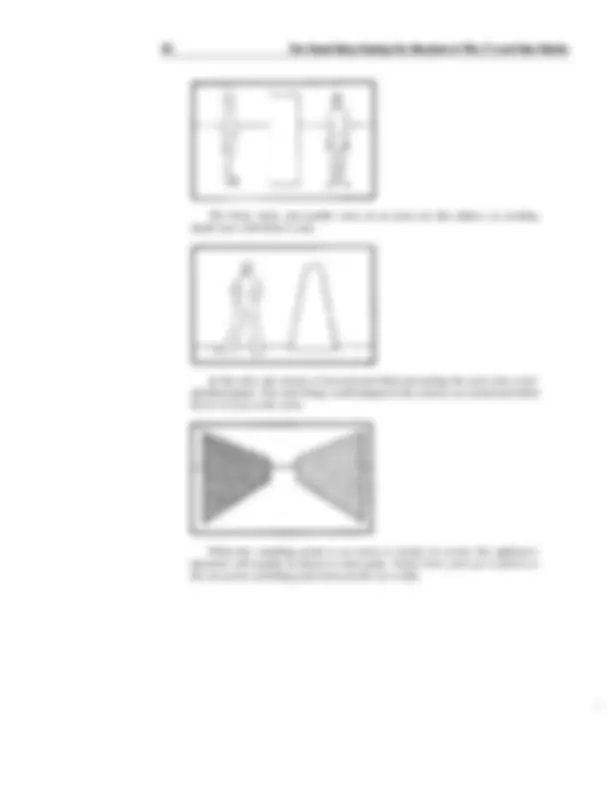
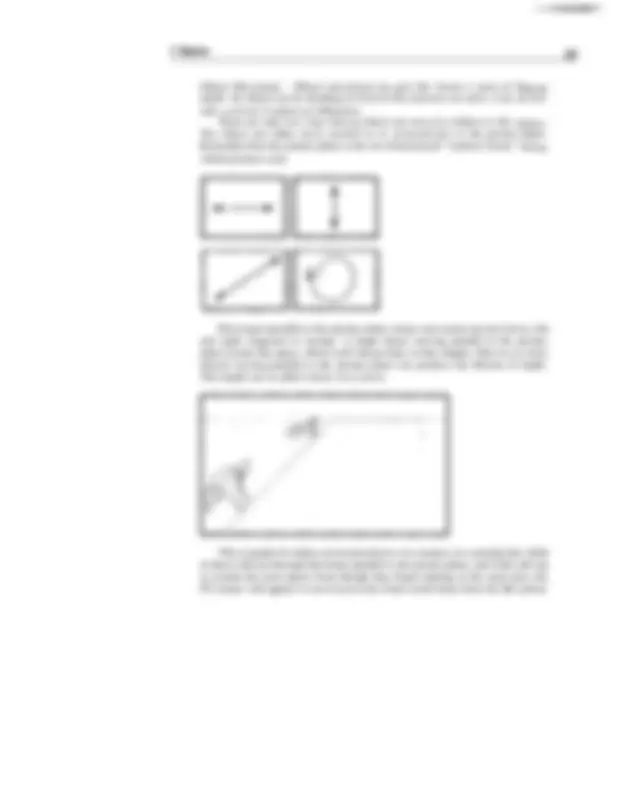
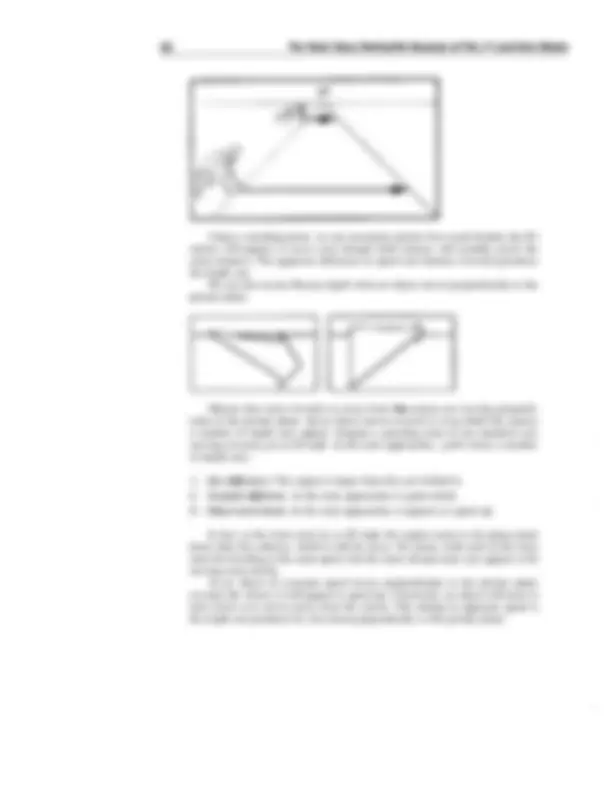
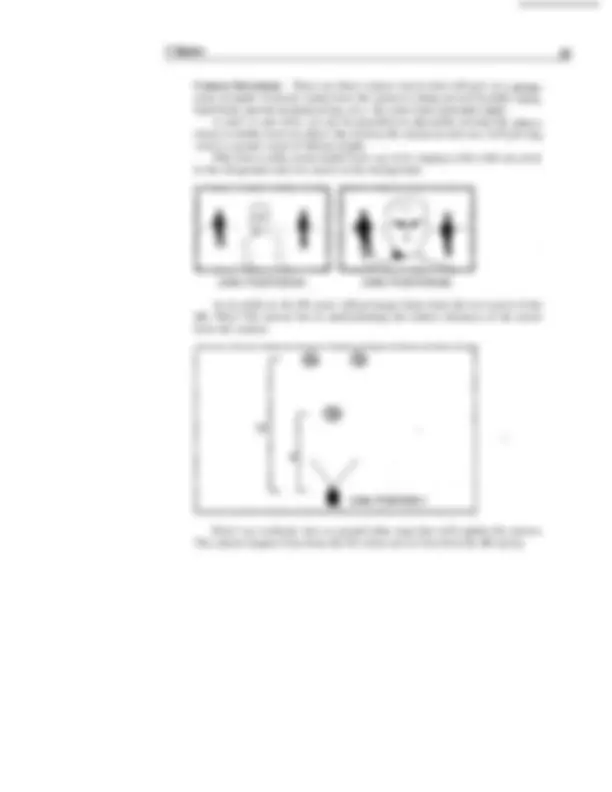

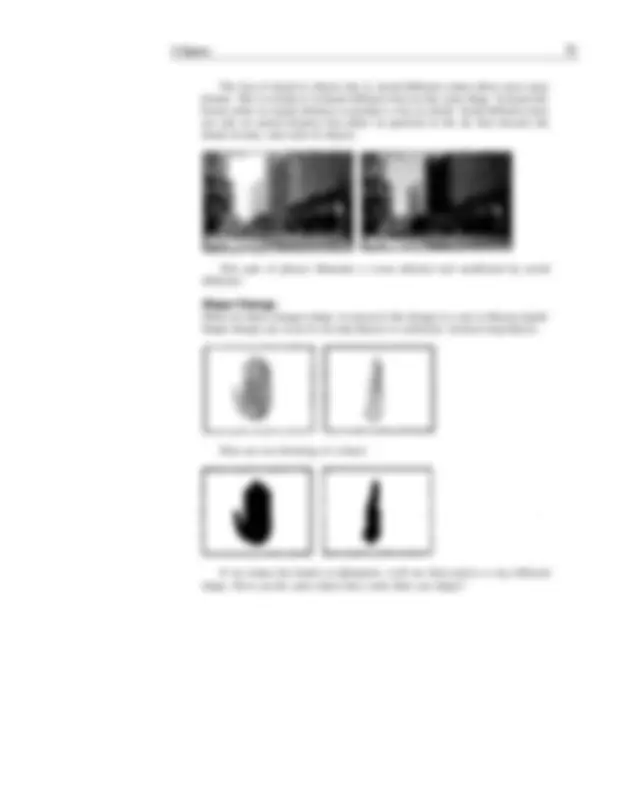
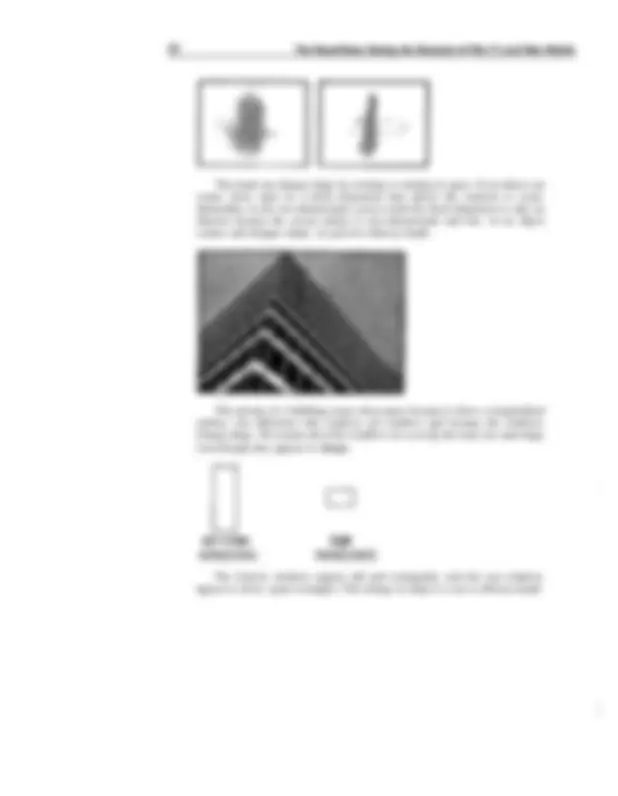
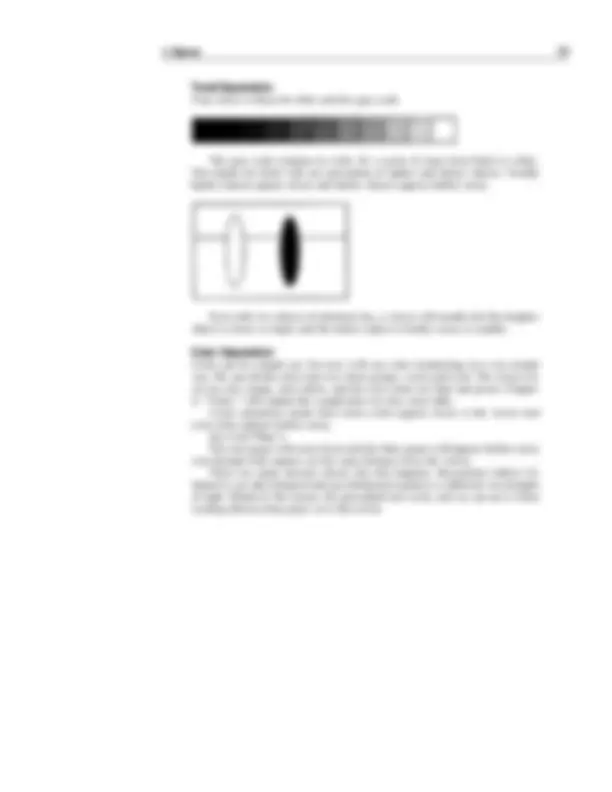
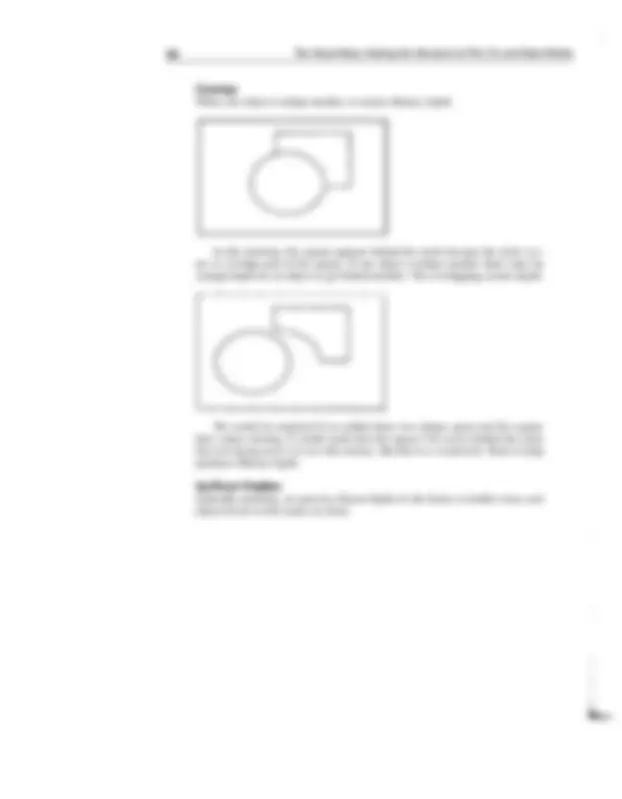
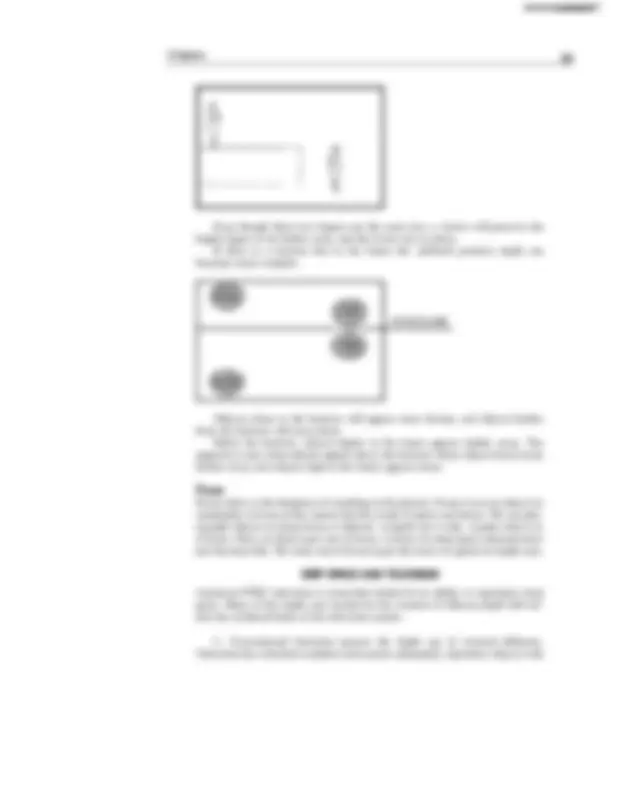

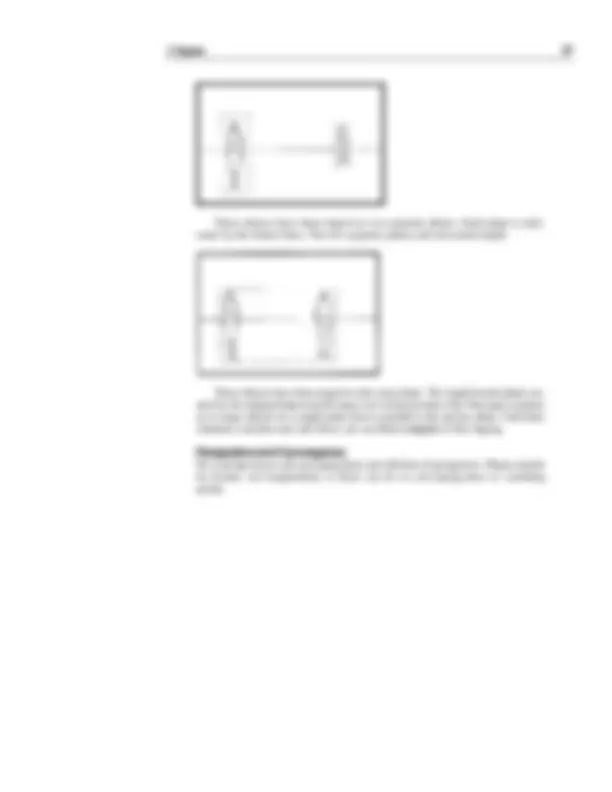
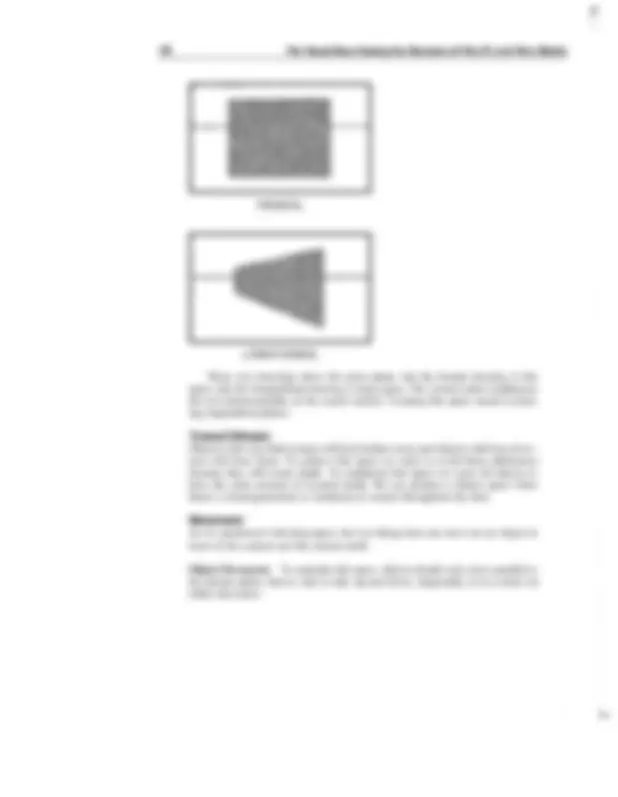
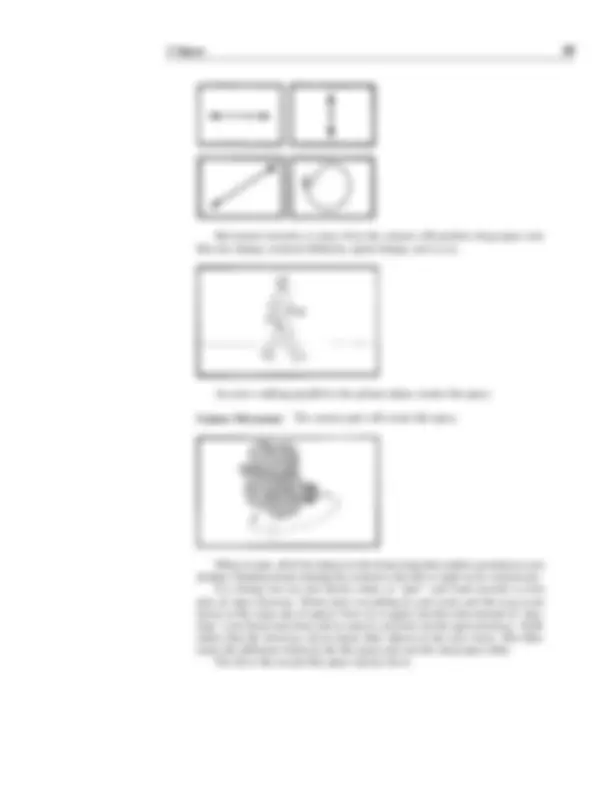


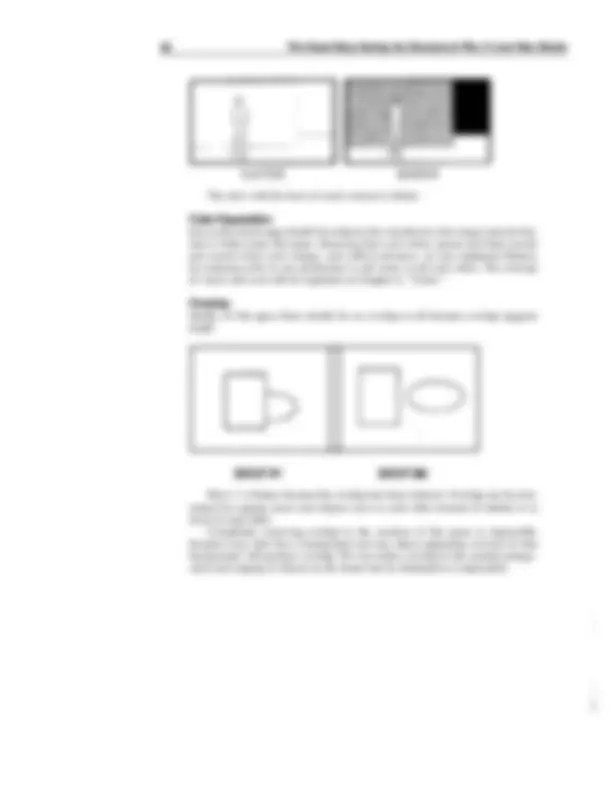
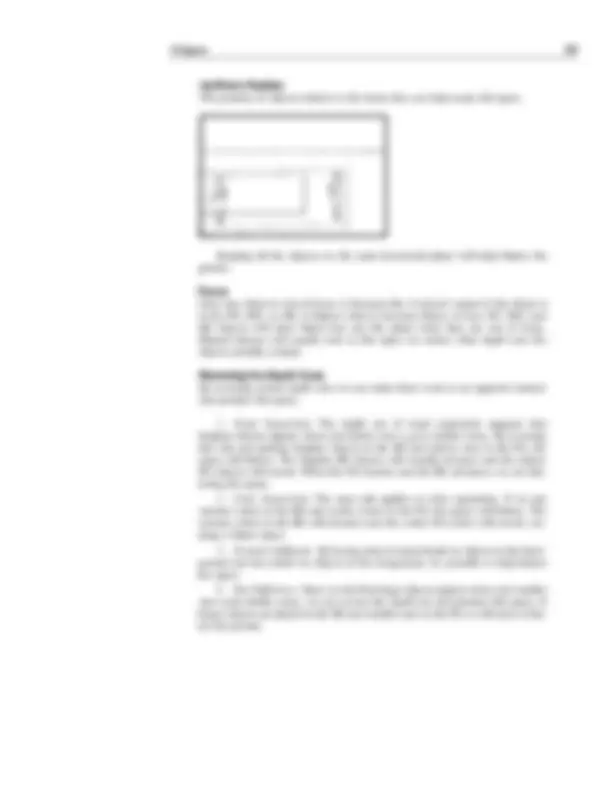
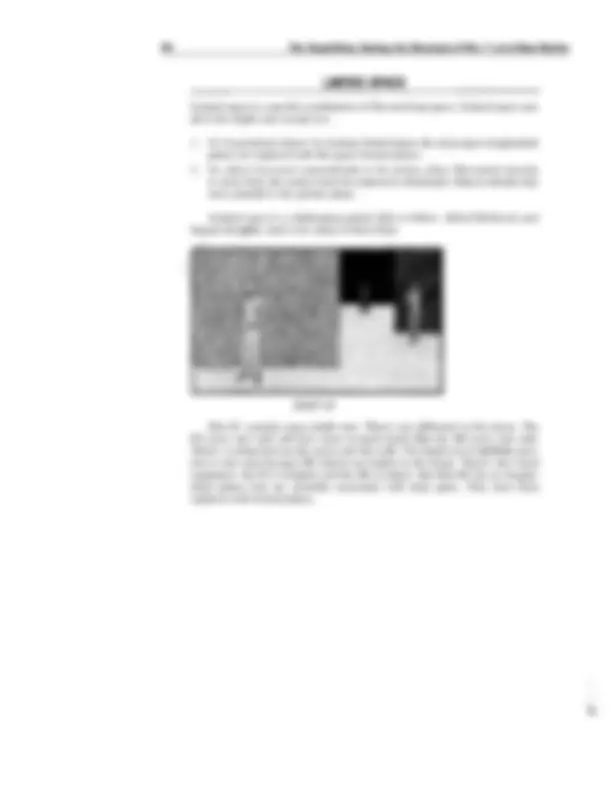
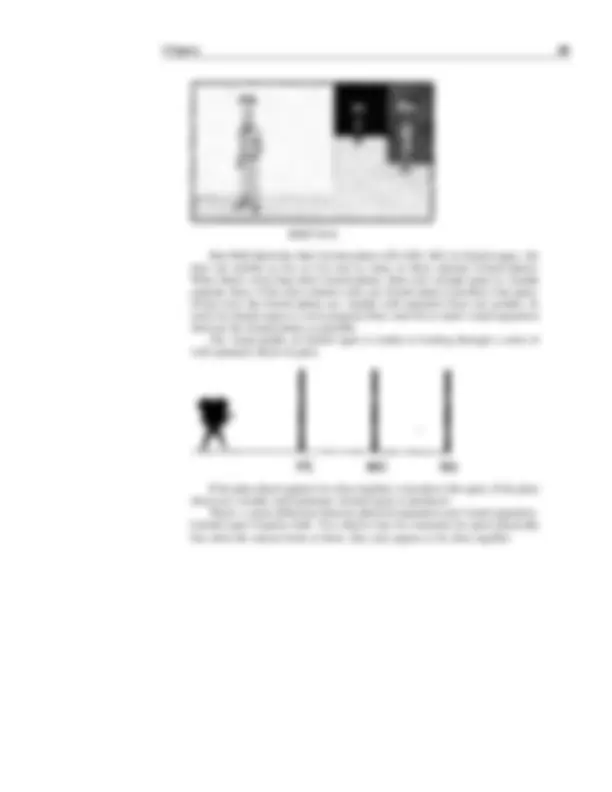
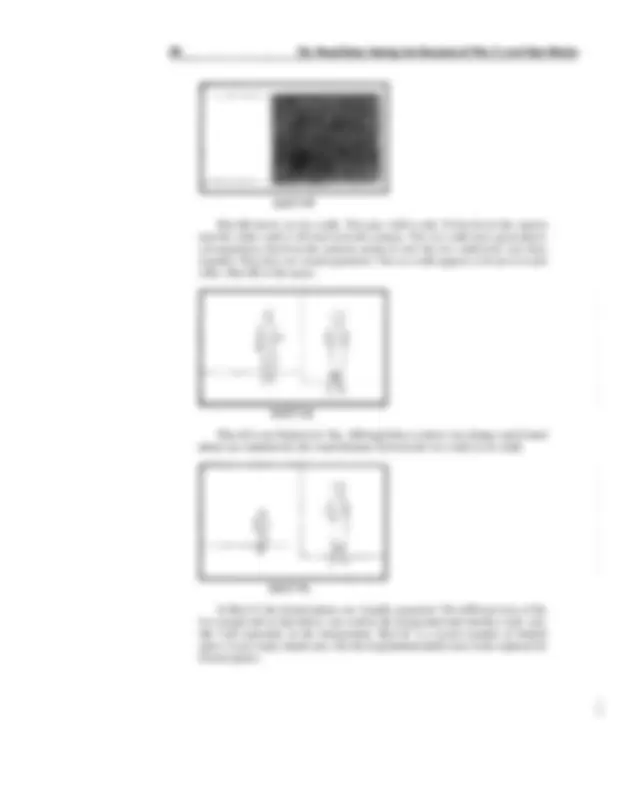
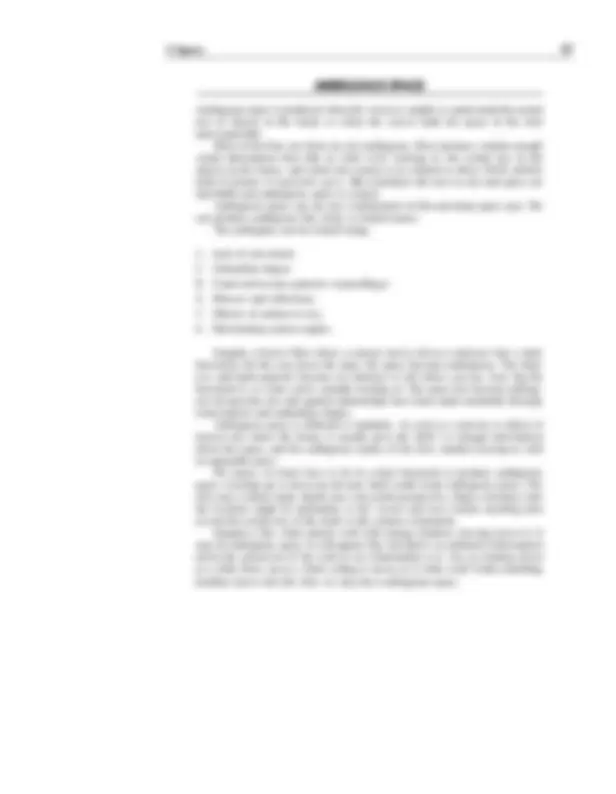
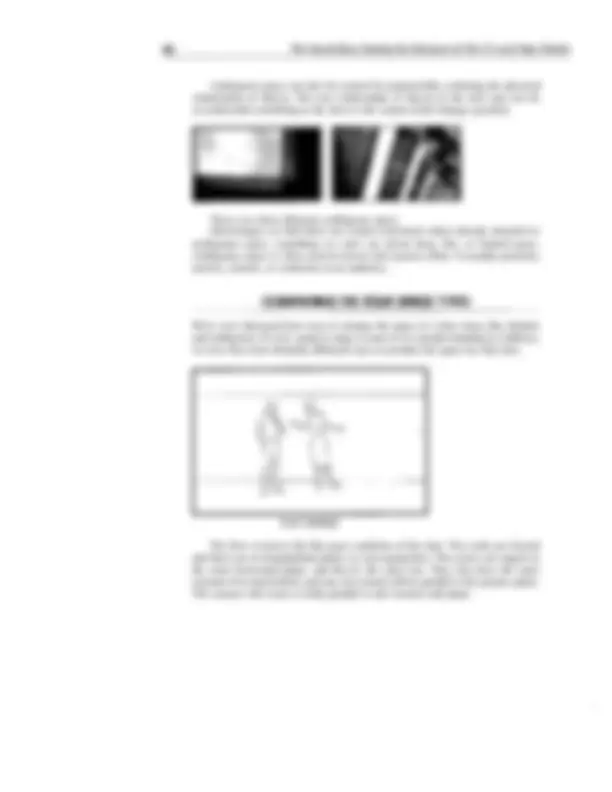
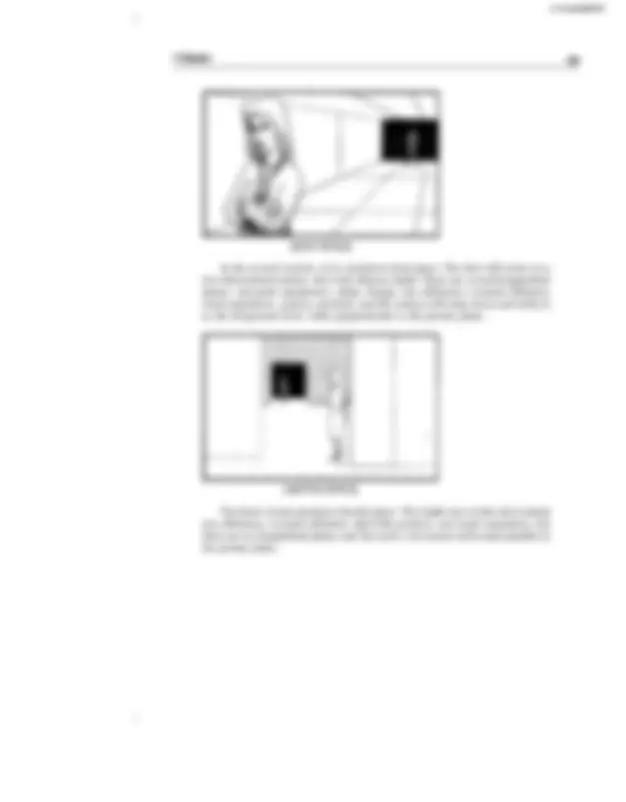
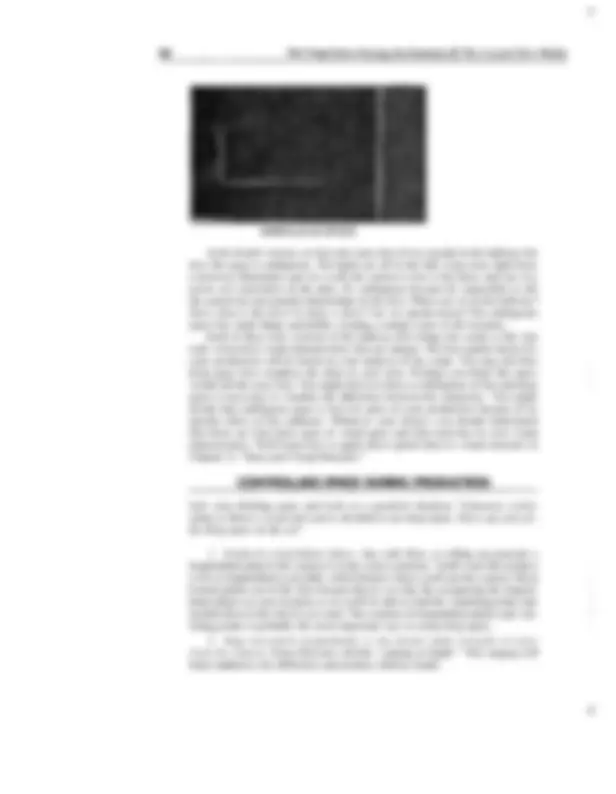

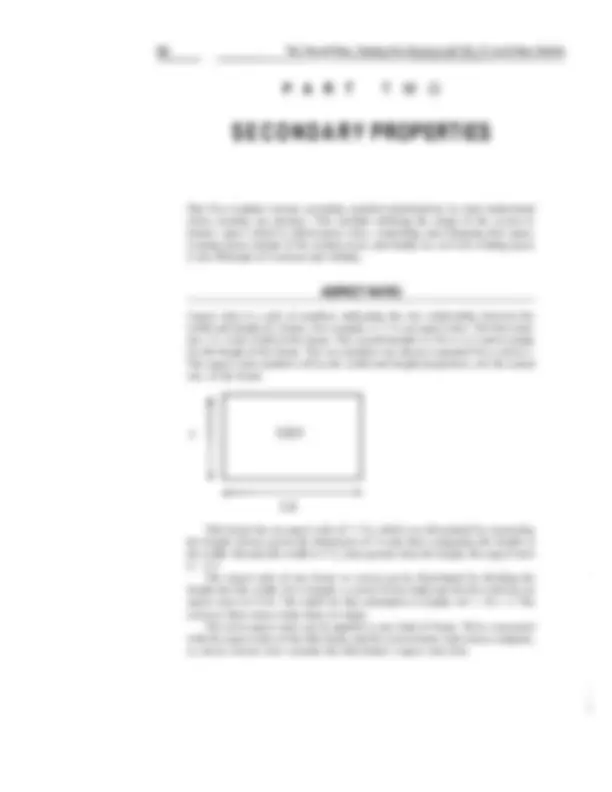
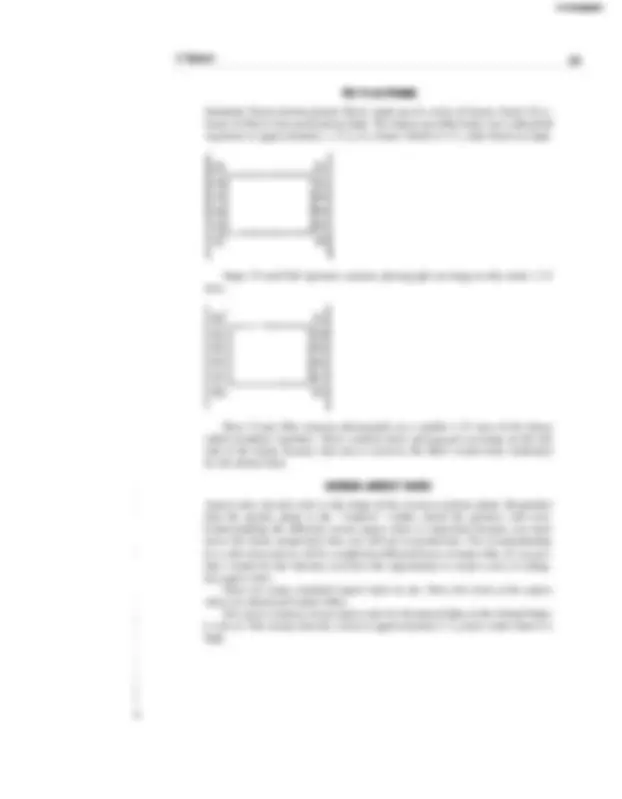
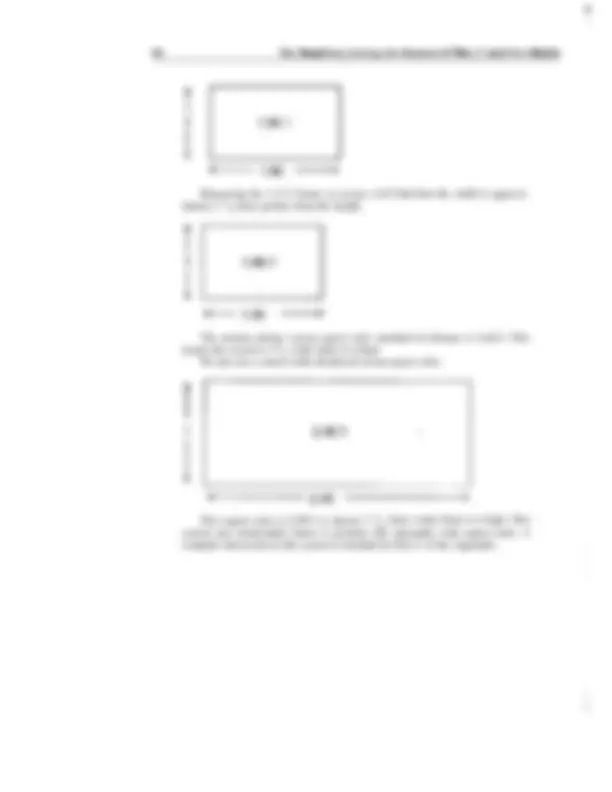

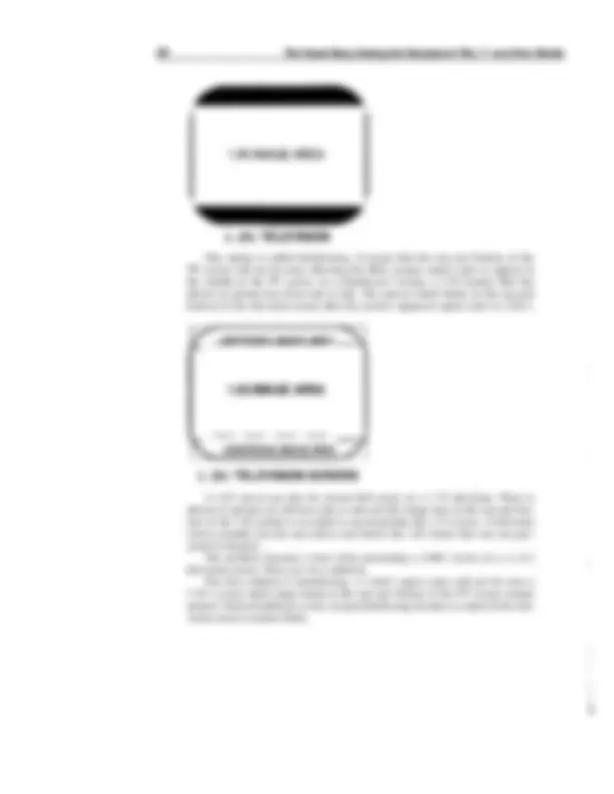
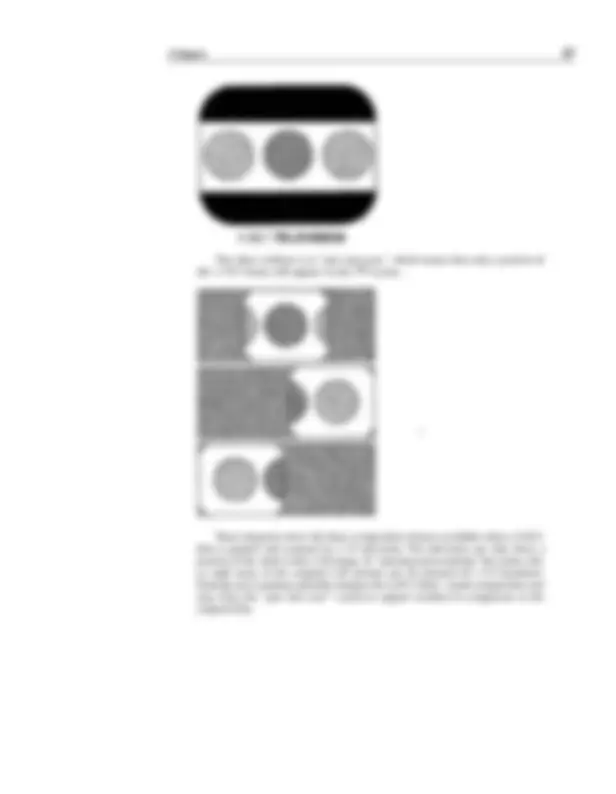
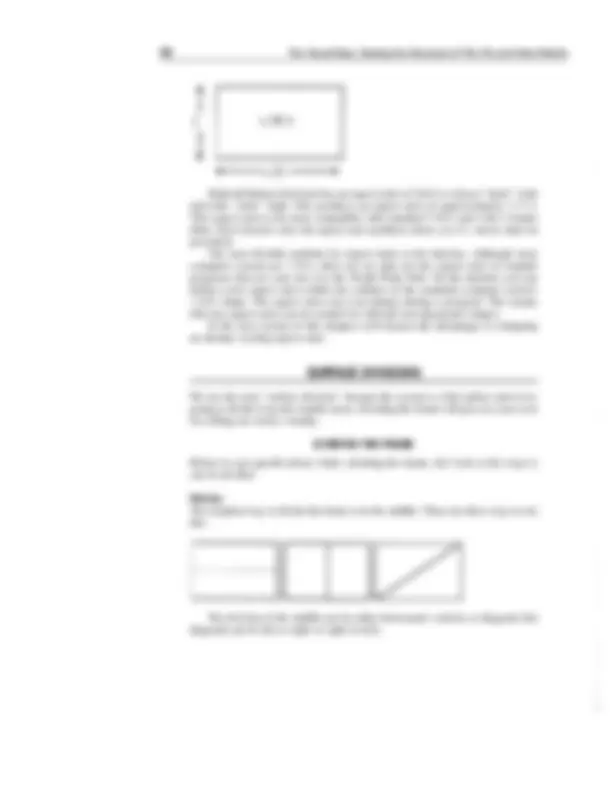
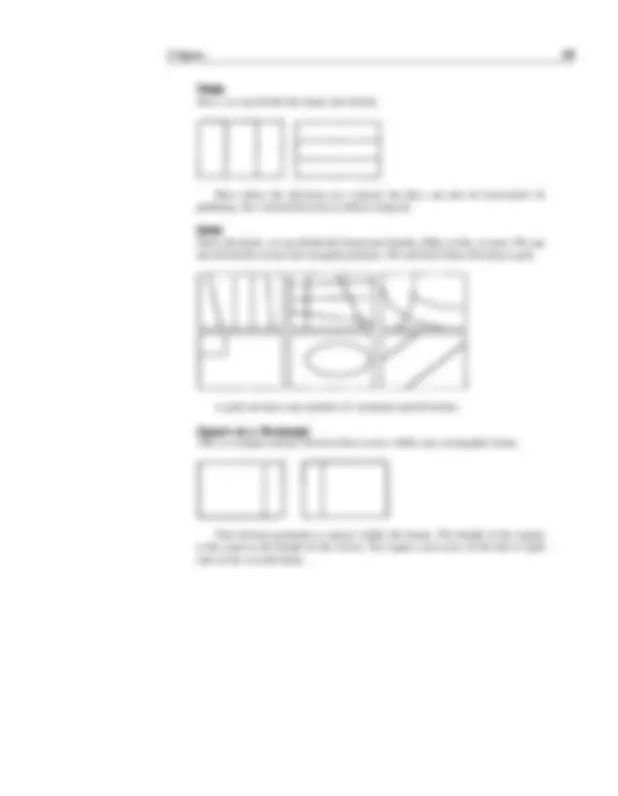
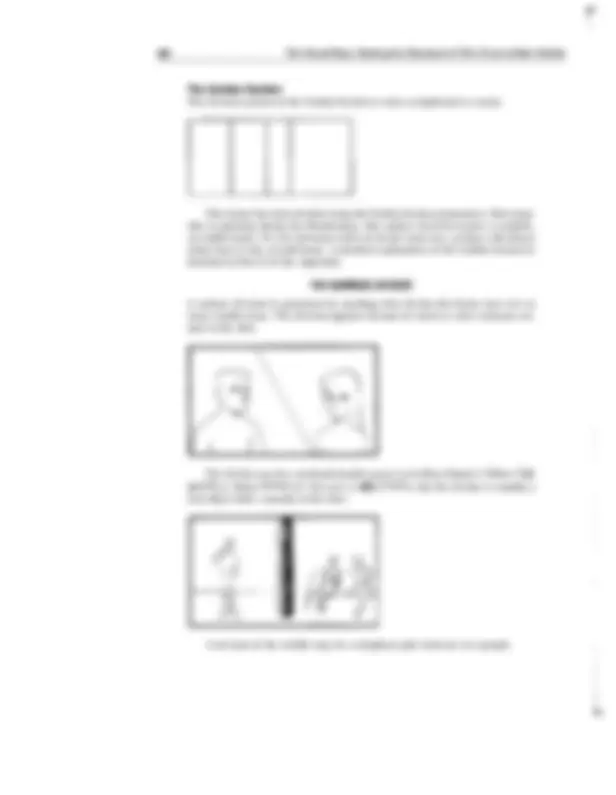
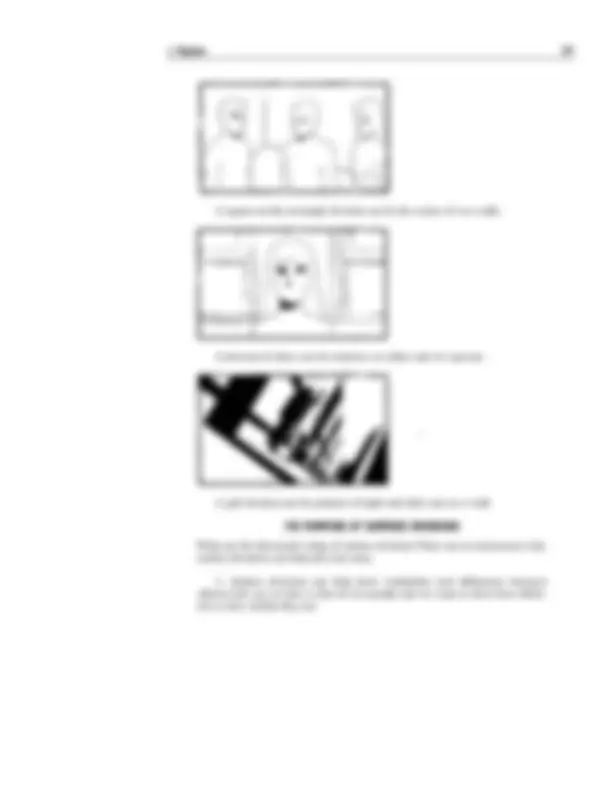
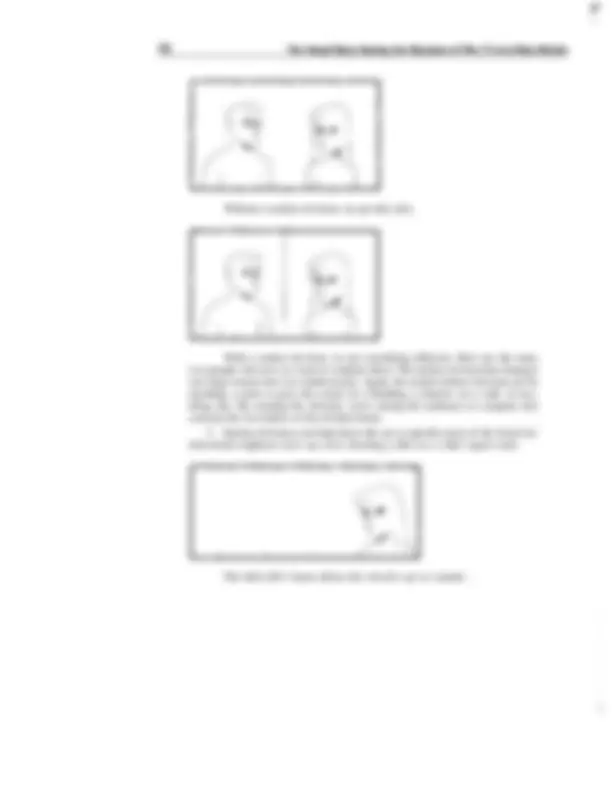
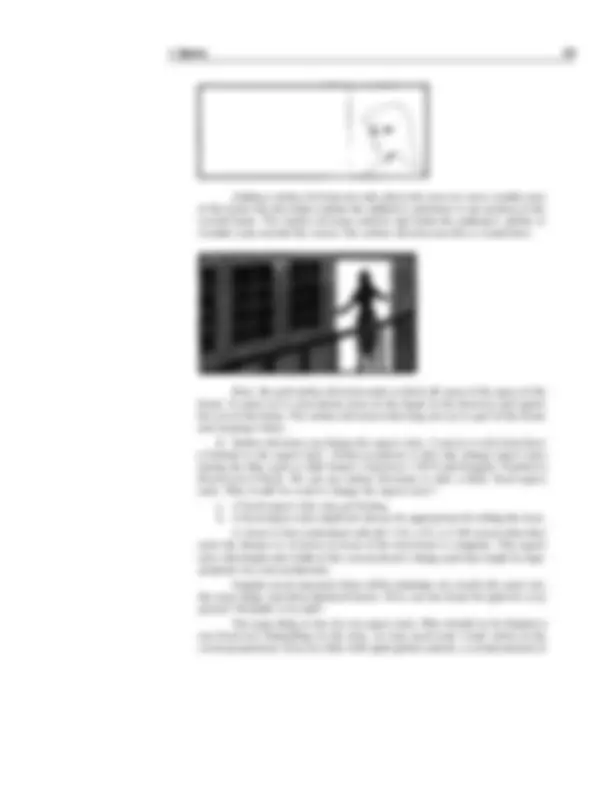
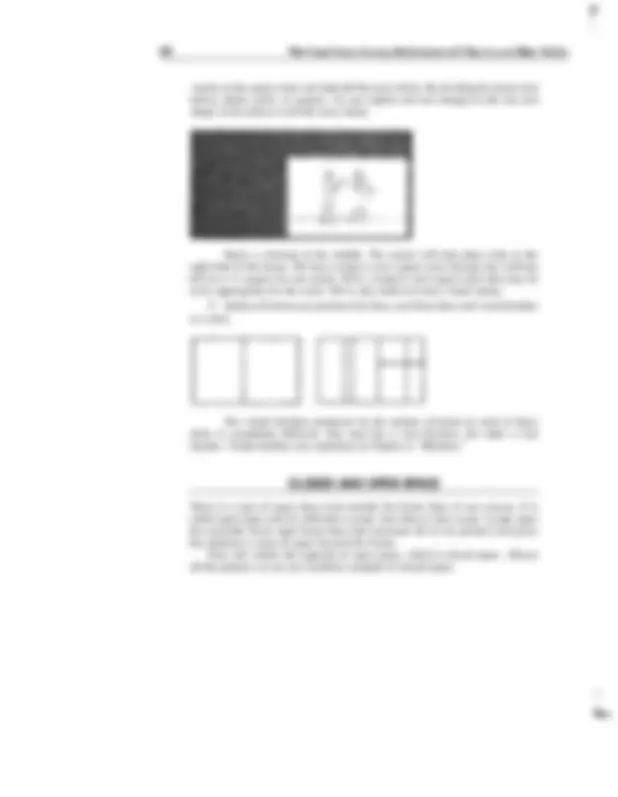
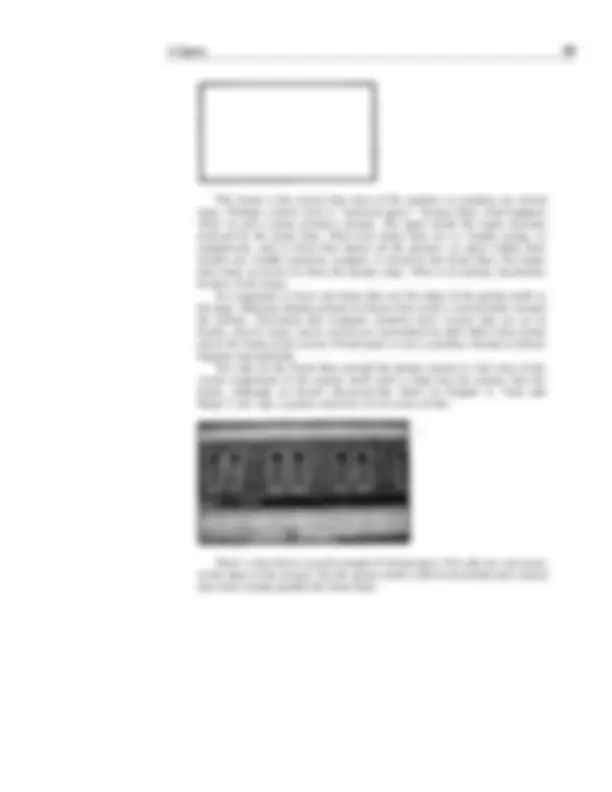

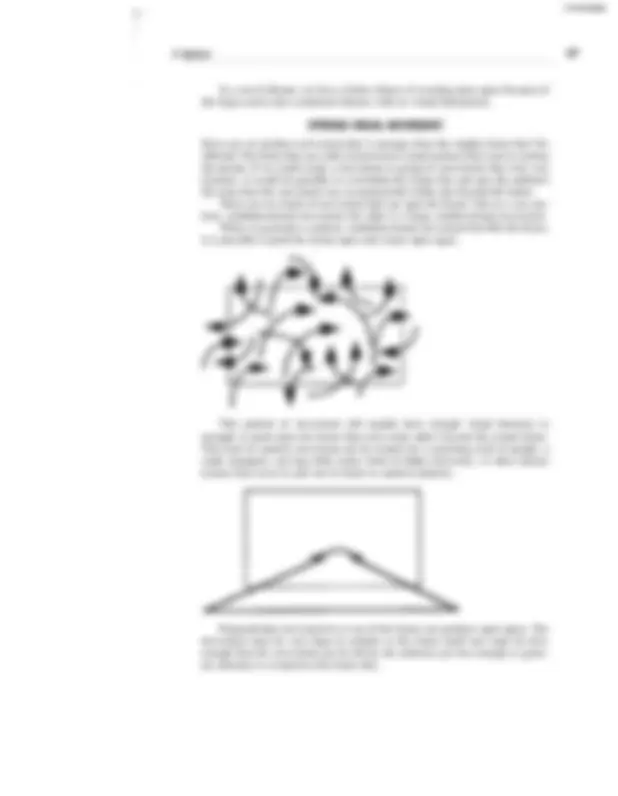
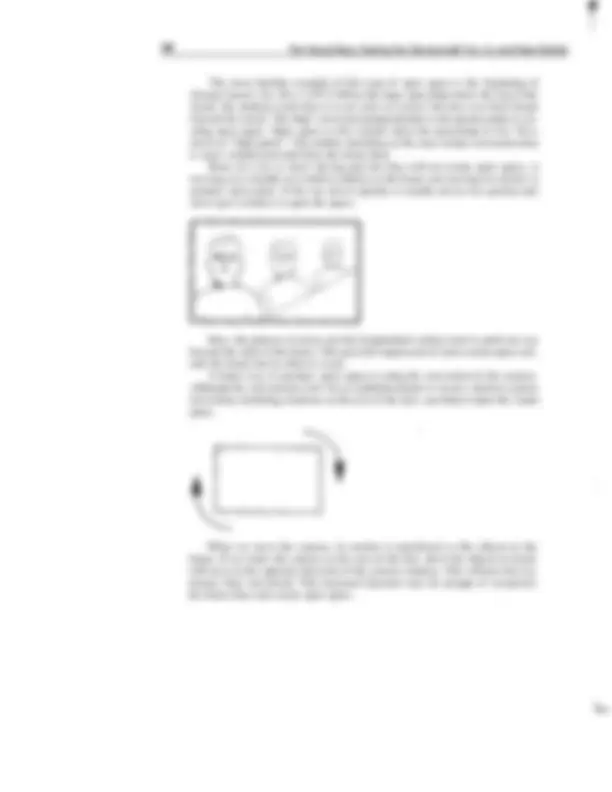
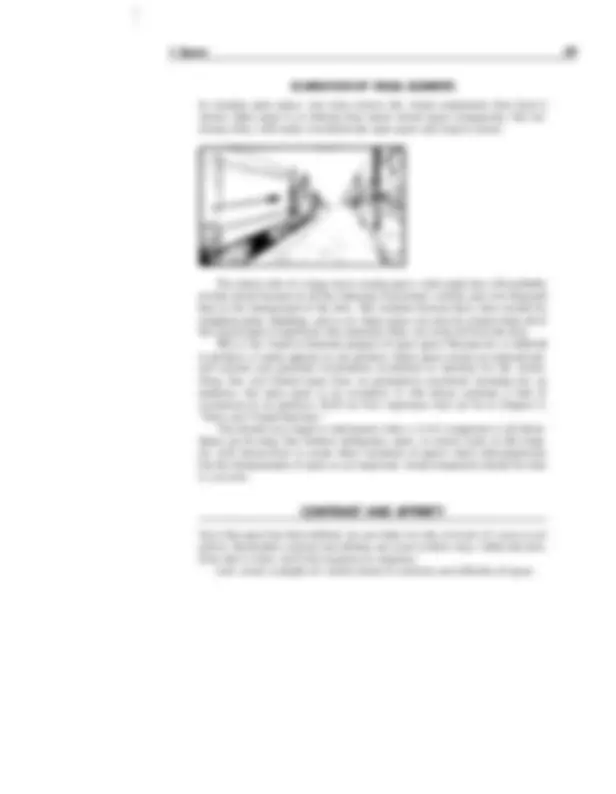
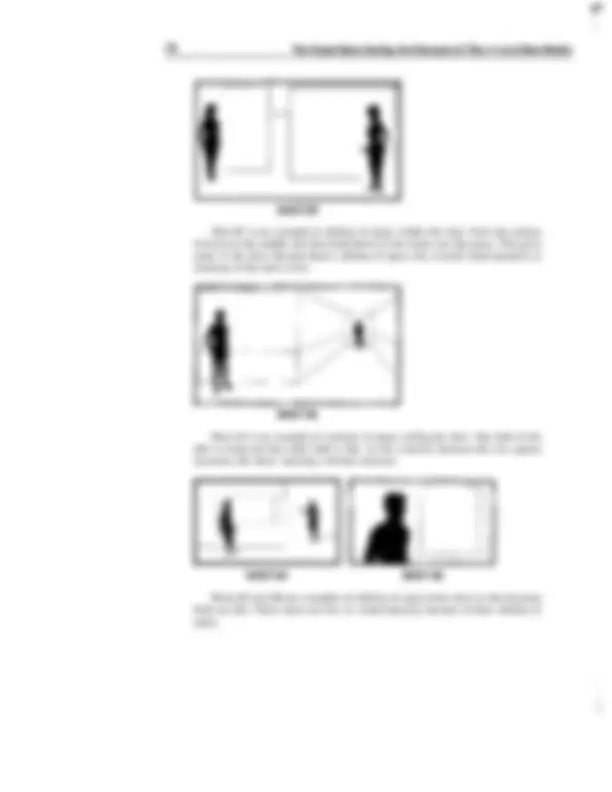
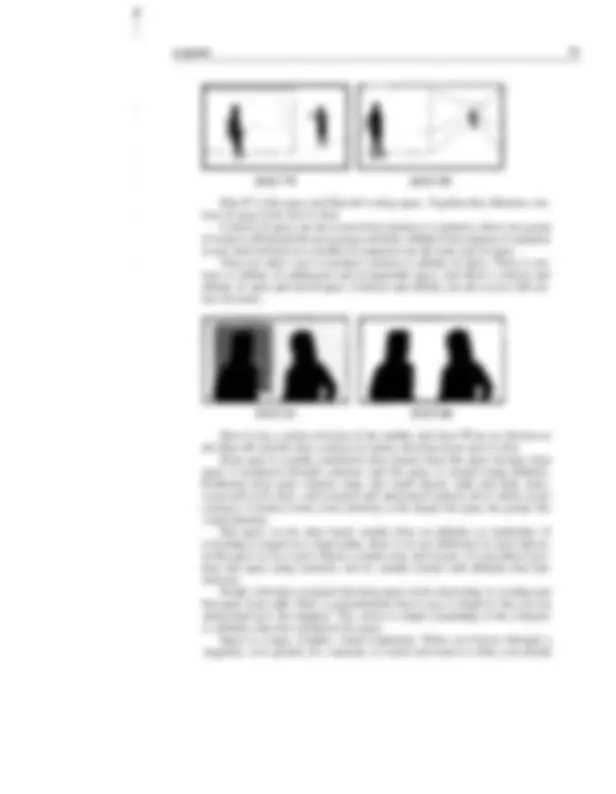

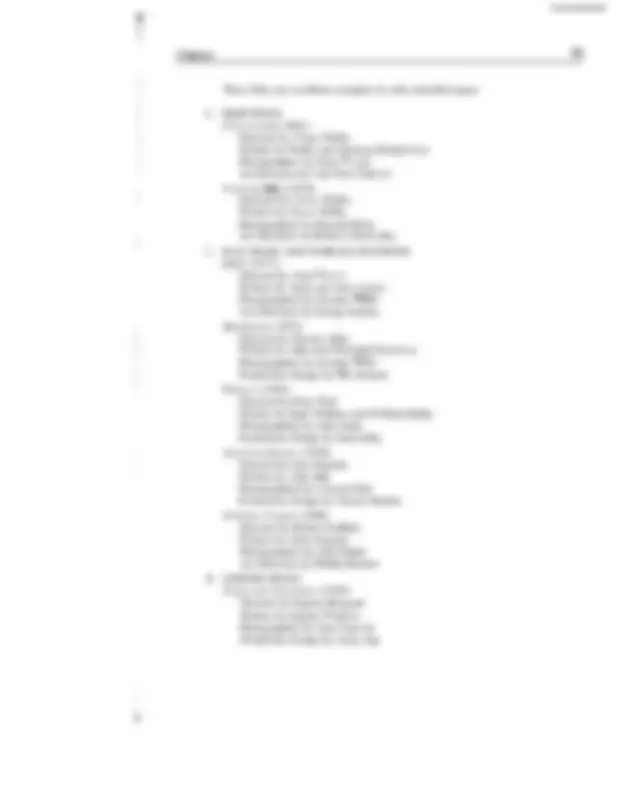



Study with the several resources on Docsity

Earn points by helping other students or get them with a premium plan


Prepare for your exams
Study with the several resources on Docsity

Earn points to download
Earn points by helping other students or get them with a premium plan
Community
Ask the community for help and clear up your study doubts
Discover the best universities in your country according to Docsity users
Free resources
Download our free guides on studying techniques, anxiety management strategies, and thesis advice from Docsity tutors
In cinematography deep space technique helps in amaking viewer a fool. It shows a 3D plane on a 2D surface.
Typology: Lecture notes
1 / 62

This page cannot be seen from the preview
Don't miss anything!























































Space is a complex visual component. It not only defines the screen where all of the other visual components are seen, but space itself has several complex levels or sub components that we need to understand. To simplify our discussion, this chapter on space is divided into two parts. Part One defines the four basic sub components of space and Part Two describes all of space's secondary properties.
14 The Visual Story: Seeing the Structure of Film, TV, and New Media
THE PRIMARY
SUB COMPONENTS
Let's begin by examining the space of the screen because it is upon this screen that all of the visual components will exist. The physical nature of the screen is strictly two- dimensional. A screen is a flat surface that can be measured in height and width but practically speaking has no depth. This is true for any screen surface, from a computer or television to a movie screen. The real world that we live in is three-dimensional, having height, width, and depth. Our challenge is to portray a three-dimensional world on a two-dimensional screen surface and have the result look believable. We'll expect a viewer to watch the two- dimensional pictures and accept the images as realistic representations of their three - dimensional world. How can we take a two - dimensional screen surface and create pictures on it that give the illusion of three - dimensions or depth? We're not talking about 3- D movies or holograms (although the latter is truly a three- dimensional picture). We're talking about normal pictures on a computer, television, or motion picture screen that look three- dimensional even though they're being shown on a flat screen surface. The first step in understanding the visual component of space is to explore the four basic types of space: deep space, flat space, limited space, and ambigu- ous space.
Deep space is the illusion of a three - dimensional world on a two-dimensional screen surface. It's possible to give an audience the experience of seeing a three - dimensional space (height, width, and depth) even though all of the depth is illu- sory. The depth is not actually there; it can never be there because the screen upon which the picture exists is flat. Our ability to fool the audience into thinking there's depth on the screen when there's no depth at all comes from our knowledge and use of depth cues.
16 The Visual Story: Seeing the Structure of Film,^ TV,^ and New Media
The two people have been staged on two separate planes indicated by the dotted lines. One is on the MG (midground) plane and the other is on the BG (background) plane. This concept might seem simple and obvious, but size difference is an extremely important and basic depth cue. It's a way to create illusory depth in a picture. If you watch Orson Welles' Citizen Kane (1941) you'll see that the stag - ing of actors and the illusion of depth revolves around this basic principle. In fact, this depth cue is sometimes called "staging in depth.''
Perspective and Convergence We can talk about perspective in two ways. We can discuss drawing with it and we can discuss recognizing it in the real world. Perspective occurs when we rep - resent a three-dimensional world on a two- dimensional surface. Convergence can be defined as "parallel lines of a single plane meeting at a vanishing point," but this definition sounds meaningless. To make convergence useful, we need to understand some simple terms and look at some picture examples.
Here's the two - dimensional plane that we introduced in Chapter 1, "The Visual Components. " Notice that the plane's top and bottom lines are parallel and that its left and right side lines are parallel. We call this plane a frontal plane. You could think of it as a large, flat wall. For our purposes, perspective comes in three basic types: one- point, two - point, and three - point perspective. These three types of perspective form a visual progression from simple to complex. Now let's examine each one.
One- Point Perspective: Let's begin with the simplest type of perspective that may already look familiar to you.
3: Space 17
If we change our view of the frontal plane, the depth cue of perspective and convergence will appear. The top and bottom lines of the frontal plane are no longer parallel. We've created a longitudinal plane, an extremely important cue to illusory depth. The longitudinal plane appears to exist in depth. One side of the plane looks farther away even though it really exists on a flat paper surface.
The lines along the top and bottom of the longitudinal plane appear to meet or converge at a single point on the horizon called a vanishing point or VP. Usually the vanishing point appears on the horizon, although it can be anywhere, as we'll see in three-point perspective. A classic example of one- point perspective occurs when we stand in the mid- dle of a railroad track and look down the track towards the horizon.
The rails of the track appear to meet or converge at a vanishing point on the horizon. The rails never actually meet; they always remain parallel, but they appear to converge towards the vanishing point. We equate this convergence with distance. The more the rails converge, the farther away they seem.
Although the vanish points are hidden behind the longitudinal planes, there are still two vanishing points here. Two vanishing points can also appear on a single longitudinal plane. To illus- trate this, let's redraw the one - point perspective longitudinal plane.
Additional lines have been added to the plane to make the convergence more obvious, but the longitudinal plane still has only one vanishing point.
If we tip the longitudinal plane away from us, or move our view closer and lower, the plane is not only angled, it's also tilted. None of the lines on this lon- gitudinal plane are parallel.
20 The Visual Story: Seeing the Structure^ of^ Film,^ TV,^ and^ New Media
There are two vanishing points. The plane's top and bottom lines converge to one vanishing point located to the left of the frame. The left and right lines converge to a second vanishing point located above the frame.
Three - Point Perspective: Finally, we have three - point perspective, which is more complex than one - or two - point perspective.
This is a view of a tall building. There are now three distinct vanishing points.
One vanishing point will appear above the building. The second and third vanishing points will appear along the horizon line to the building's left and right.
22 The Visual Story: Seeing the Structure of Film, TV, and New Media
The front, back, and profile views of an actor are like planes, so creating depth cues with them is easy.
In this shot, the camera is lowered and tilted up turning the actor into a lon - gitudinal plane. The same thing would happen if the camera was raised and tilted down to look at the actor.
When the vanishing point is on screen or nearly on screen, the audience's attention will usually be drawn to that point. Notice how your eye is drawn to the on- screen vanishing point between the two walls.
If the vanishing point is out of frame, it loses its ability to attract the audi - ence's eye.
In this shot your eye is drawn to the actor, but it is also drawn to the van - ishing point between the two walls. If our intent is to keep the audience's atten - tion on the actor, we may have created a problem.
In this shot, your attention will go to the vanishing point located directly behind the actor. The vanishing point helps keep your attention in place on the actor. Does this mean that actors must always be located on the vanishing point? Absolutely not. It's just important to know that vanishing points will usually attract an audience's attention.
3: Space (^25)
Object Movement: Object movement can give the viewer a sense of illusory depth. An object can be anything in front of the camera-an actor, a car, an ani - mal, a crowd, it makes no difference. There are only two ways that an object can move in relation to the camera. The object can either move parallel to or perpendicular to the picture plane. Remember that the picture plane is the two - dimensional "window frame" within which pictures exist.
Movement parallel to the picture plane means movement up and down, left and right, diagonal or circular. A single object moving parallel to the picture plane creates flat space, which we'll discuss later in this chapter. But two or more objects moving parallel to the picture plane can produce the illusion of depth. This depth cue is called relative movement.
This example of relative movement shows two runners at a starting line. Both of them will run through the frame parallel to the picture plane, and both will run at exactly the same speed. Even though they begin running at the same time, the FG runner will appear to travel across the frame much faster than the BG runner.
26 The^ V i l^ Story:^ W i n g^ ?he Structure of^ Film,^ TV,^ and^ New^ Media
Using a vanishing point, we can accurately predict how much further the FG runner will appear to move even though both runners will actually travel the same distance. The apparent difference in speed and distance traveled produces the depth cue. We can also create illusory depth when an object moves perpendicular to the picture plane.
cular to the picture plane. As an object moves toward or away from the camera a number of depth cues appear. Imagine a speeding train of one hundred cars moving towards you at 80 mph. As the train approaches, you'll notice a number of depth cues:
1. Size difference. The engine is larger than the cars behind it. 2. Textural diffusion. As the train approaches it gains detail.
3. Object movement. As the train approaches it appears to speed up.
In fact, as the train roars by at 80 mph, the engine seems to be going much faster than the caboose, which is still far away. Of course, both ends of the train must be traveling at the same speed, but the more distant train cars appear to be moving more slowly. As an object of constant speed moves perpendicular to the picture plane towards the viewer, it will appear to speed up. Conversely, an object will seem to slow down as it moves away from the viewer. This change in apparent speed is the depth cue produced by movement perpendicular to the picture plane.
28 The Visual Storv:^ Seeina^ the Structure of^ Film,^ TV,^ and New Media
CAM. POSITION 2
CAM. POSITION 1
The camera dollies in 5 feet. Now we're only 1 foot from the FG actor, but we're 50 feet from the BG actors. The FG actor went from 6 feet to only 1 foot from the camera, so we'd expect to see a huge size change. The BG actors went from 55 feet to 50 feet, so their size change is minimal, because they're still so far from the camera. This relative difference in size change (the FG object gets larger faster than the BG object) is a cue to illusory depth. Conversely, when we dolly out (or away from the subject) the FG actor will get smaller quickly and the BG actors will barely change size at all. We can also create illusory depth with a camera movement when we dolly left and right, often called a tracking shot.
CAM. POSITION #I CAM. POSITION #
As the camera dollies or tracks from left to right, the FG actor passes the camera faster than the three actors in the BG.
3: Space 29
There's relative movement between the faster moving FG and the slower mov- ing BG objects. An audience interprets the faster moving FG and the slower moving BG as a depth cue. The third type of camera move that produces illusory depth is a boom or crane shot. It means that the camera is moved up or down. The principle is iden - tical to the tracking shot, but instead of moving horizontally, the camera moves vertically.
CAM. POSITION #I CAM. POSITION #
As the camera cranes up, the actor in the FG will move quickly out the bot - tom of the frame and the two BG actors will move more slowly. As the camera cranes down, the FG actor will come into the frame quickly, but the BG actors will barely move.
The loss of detail in objects due to aerial diffusion makes them seem more distant. This is similar to textural diffusion but not the same thing. Textural dif- fusion relies on actual distance to produce a loss in detail. Aerial diffusion does not rely on actual distance but rather on particles in the air that obscure the detail, texture, and color of objects.
This pair of photos illustrates a scene affected and unaffected by aerial diffusion.
Shape Change When an object changes shape, we perceive the change as a cue to illusory depth. Shape change can occur in moving objects or stationary (nonmoving) objects.
Here are two drawings of a hand.
If we reduce the hands to silhouettes, we'll see that each is a very different shape. How can the same object have more than one shape?
The hand can change shape by rotating or turning in space. If an object can rotate, there must be a third dimension that allows the rotation to occur. Remember, in the two - dimensional screen world the third dimension is only an illusion because the screen surface is two-dimensional and flat. As an object rotates and changes shape, we perceive illusory depth.
This picture of a building creates deep space because it shows a longitudinal surface, size difference (the windows get smaller), and because the windows change shape. We assume all of the windows are actaally the same size and shape even though they appear to change.
The bottom windows appear tall and rectangular, and the top windows appear as short, squat rectangles. This change in shape is a cue to illusory depth.